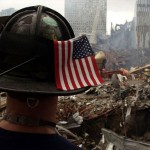Here’s a cool infographic about the most dangerous cars in the world!
The deadliest cars in the world are out there and no, they aren’t Decepticons! Check this out and see if you’re driving a killer car!
The Deadliest Cars in the World: Most Dangerous Vehicles EVERDeadly Cars
However, there are many cars, which, for whatever reason, remain unsafe. This is generally due to compromises made on behalf of the manufacturer. For example, certain types of steel reinforcement may be omitted to improve the aerodynamic performance or fuel efficiency of the vehicle. Additionally, the inherent design of many types and classes of vehicle makes it difficult to incorporate certain safety features. For example, some small models would have to sacrifice cost and styling in order to incorporate crumple zones.
This presents a problem if you want to purchase a small, affordable commuter vehicle but don’t want to compromise in terms of safety. The Kia Rio, for instance, was the fourth most dangerous car in America from 2000-2003, with only SUVs and sports cars leading to more fatalities in accidents. So how can you tell the difference between a safe commuter vehicle and a dangerous one?
Choosing Safer Cars
A simple way to determine if a small commuter vehicle is safe is to examine the weight and sturdiness of the car. The more plastic and thin aluminum sheeting the vehicle has, the more likely it is to disintegrate in the event of a crash, hurting passengers with pieces of sharp plastic, glass, and metal. Safe small cars, such as the Volkswagen Golf, Honda Accord, and Honda Fit, have roll cages and metal bars built directly into the frames to direct crash energy away from the passengers toward other parts of the car, ensuring the passenger compartment remains intact and undamaged.
Smaller vehicles, such as the New Mini and Smart, will supplement with “crumple zones,” parts of the car intended to absorb and redirect impact towards “sacrificial bodywork,” which is destroyed instead. The Ford Fiesta is an example of a small car, which makes extensive use of integrated crumple zones and a caged passenger area. The Fiesta is equally at home in urban areas and off-road rally courses.
SUVs
SUV safety, however, is based on center of mass and builds quality. The most deadly car from the 2000-2003 period was the Chevy Blazer, a massive SUV built on the frame of a pickup truck. The reason this model was so dangerous and underwent extensive redesign in 2004 is that it had a poor center of mass. The great amount of added weight in the conversion from truck to SUV is a problem plaguing many older-model SUVs. They, like the earlier Blazer, were constructed on an existing truck chassis rather than on a chassis designed specifically for them.
Rollover Dangers
SUVs inherently have more weight and ground clearance than other cars, a legacy of their history as off-road and utility vehicles. While this may be excellent for rolling through deep mud or high grass, it is very dangerous on paved city streets. Placing the center of gravity far off the ground makes a car very likely to roll when it tries to change direction, as demonstrated routinely in monster truck shows. While SUVs certainly aren’t as heavily jacked-up or custom-modified as monster trucks, their high centers of gravity and comparatively narrow wheelbases make them drive as though they were on stilts, increasing the likelihood of a rollover.
A Generation of Compromised Quality
Additionally, many SUVs produced in the late 90s and early 2000s were “quick conversion” models intended to satisfy market demand for big, powerful vehicles capable of carrying lots of passengers and traveling long distances. This resulted in lower build quality and a lack of careful adaptation and re-engineering of the parts. Many older SUVs were unable to redirect force in the event of a crash, or their crumple-zones were overwhelmed by the amount of weight put on them.
Additionally, the use of increased tire sizes led to a number of infamous rollover incidents because of the amount of drop that occurs when a tire fails suddenly and the vehicle rides on the rim. Many SUVs, because they are on “stilts,” will fall onto two wheels and the rim when a tire blows, causing a rollover.
Safer Family Cars
Anyone planning to transport multiple passengers should choose a minivan instead of an SUV. The minivan is considered a “family car.” Therefore, great emphasis has been placed on keeping the center of balance low and reinforcing the sides and roof. If the SUV is your dream vehicle, check out purpose-built vehicles, such as the Volkswagen Touareg and the Toyota Rav 4, both of which have a wide wheelbase, low center of gravity, and a frame custom-built to accommodate the extra weight inherent in an SUV. The Touareg, in particular, has a very powerful frame and extensive crumple zones. It’s designed to compete in rallying, a sport which necessitates driver protection and exceptional frame construction.
While these tips serve as good guidelines, always research the vehicle you intend to buy. Check crash ratings and automobile website forums to see what owners have to say about safety.












